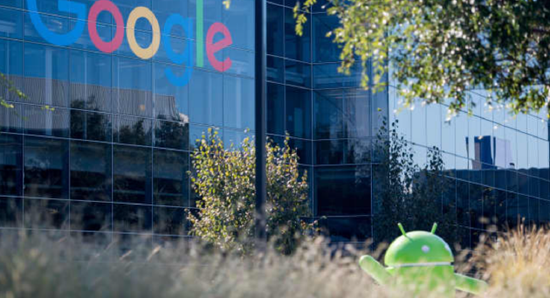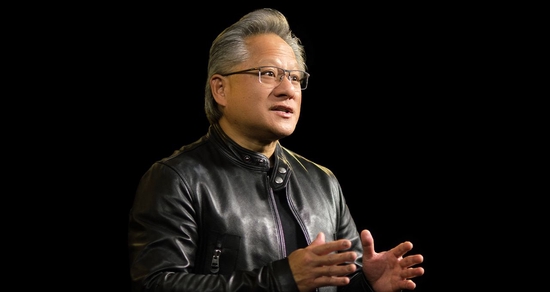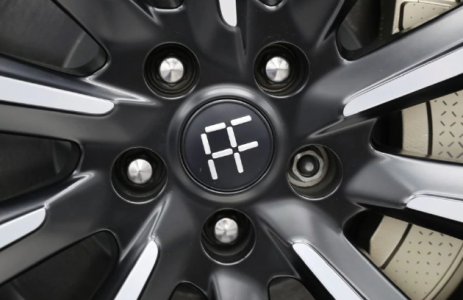your current location is:Home > Finance > depthHomedepth
Why does Apple always want to eliminate the SIM card?

Apple's radical announcement to cancel the SIM card has caused an uproar in the industry. Although this technology has been perfected several years ago, its implementation is not a technical issue, but a business benefit distribution issue.
Written by Ni Yuping
Editor / Li Yuan
The person who hates SIM cards the most in the world is probably Apple.
It is hard to imagine now that the first SIM card born in the world in 1991 was about the size of a bank card. Since then, the SIM card has been reduced from a standard card of "25mm × 15mm" to a small card of "15mm × 12mm", and then to a mini card, which has maintained its current form. But at the launch event in early September, Apple announced that it would be more aggressive in removing the SIM card. Behind this, every time the size of the SIM card is reduced, it is accompanied by Apple's resolute "fight" with the SIM card in the process of mobile phone development.
In 2010, the iPhone 4 brought the small card into commercial use for the first time; in 2012, the iPhone 5 further reduced the size of the SIM card to half the size of the original card. Recently, Apple announced that it will cancel the physical card slot in the iPhone 14 launched in the United States, and rely entirely on the eSIM card (Embedded-SIM, or embedded SIM card) to provide services. The eSIM service provided by the iPhone 14 can support up to 8 operators and use two phone numbers at the same time - this is also dubbed "8-card dual standby" by netizens.
Where did the SIM card provoke Apple - mainly because the SIM card slot has always been a "stumbling block" in the design of Apple's mobile phones.
After all, from Liu Haiping to Smart Island, Apple hates all openings and punching holes on mobile phones. According to overseas media reports, Apple is preparing to cut off the last mobile phone interface on the iPhone 16 in 2024 - eliminating the charging port and only supporting wireless charging.
In all fairness, reducing the mobile phone interface, removing the external link link, and adopting the eSIM design embedded in the motherboard will greatly improve the shock resistance, dustproof and waterproof capabilities of the device. Mobile phones can also better adapt to harsh environments with high temperature and corrosion resistance. Of course, this will also further magnify the function and design imagination of mobile phones.
The eSIM service can be opened only by "writing the card in the air", and it will become convenient for users to change telecommunications providers. Apple's move to eliminate SIM cards will soon be followed by more mobile phone manufacturers and communication service providers. With the deepening of industrial chain collaboration, more convenient eSIM cards that can adapt to more environments will also be widely used in smart watches, wristbands, smart cars, smart homes and other terminal devices.
Recently, the Ministry of Industry and Information Technology said in response to questions from netizens: China is studying and promoting the application of eSIM technology in tablet computers, portable computers and smart phone devices. When conditions are ripe, the application of this technology will be expanded.
What many people don't know is that the small SIM card revolution also hides deep industrial thinking. Behind this, with eSIM technology as an opportunity, the picture of "Internet of Everything" is a bit clearer.
 (Photo source network, iPhone canceled the physical card slot, netizens erected a monument for the card needle)
(Photo source network, iPhone canceled the physical card slot, netizens erected a monument for the card needle)How cool is it to have a mobile phone without a card?
In September, Zhu Jiale, a self-media person who stayed in the United States, got the new iPhone 14 and immediately opened the eSIM function.
Now, after purchasing the new iPhone 14 in the United States, if you have opened the eSIM, you can directly place the new and old phones side by side, and the system will pop up a prompt whether to transfer the phone number. A few seconds after clicking "Confirm", the mobile phone number will be sent to the new mobile phone in the form of eSIM, and the original SIM card will be invalid.
If the eSIM has not been opened, you may need to log in to the operator's website on the PC first, provide the IMEI and EID numbers of the mobile phone that supports the eSIM, and complete the account opening through the feedback QR code. It takes about a few minutes before and after.
Getting rid of the physical constraints of cards, one of the advantages of eSIM is that it can easily change and increase or decrease operators. Zhu Jiale envisages: If you go to France to play, the plane lands, you take out your mobile phone and click a few times, which is equivalent to opening a small program, you can directly switch to the local telecom operator in France, and the efficiency and usage fee will be much more economical than the physical card.
Tong Tianming has been living in New Zealand for the past few years. He recalled: Two years ago, my mobile phone was using a domestic SIM card, and one day it suddenly could not be recognized and had no signal. The operator stipulates that the replacement of the card needs to be done in person at the business hall. After many consultations, the operator agreed that Tong Tianming could mail his ID card to China and entrust his family to do it on his behalf. When the new SIM card was processed, the card and ID card crossed the ocean and were sent back to New Zealand. Again and again, a month has passed. Tong Tianming said: After the eSIM goes online, he will experience the technology as soon as possible.
Although most people have not yet used eSIM technology in their mobile phones, the implementation of this technology has actually been implemented many years ago.
As early as 2011, Apple applied for a patent for a virtual SIM card, which can be seen as the prototype of today's eSIM card. Apple first added eSIM functionality to the iPad Air 2 when it was released in September 2014, allowing users to switch carriers more easily.
On the mobile phone side, in 2018, Apple introduced the eSIM card design in the iPhone XS and iPhone XR series launched, and supports the dual-card dual-standby function of a single physical SIM card + eSIM card.
Fang Xinran, who lives in the United States, has not yet purchased the latest iPhone 14, but the iPhone 13 she uses has both a physical SIM card and an eSIM. She feels that there is not much difference between the mobile phone network speed under the eSIM card, but the physical card and the eSIM are running at the same time, and the mobile phone battery "seems to drop very quickly, and it needs to be charged twice a day".
Fang Xinran also saw that eSIM in the United States is not very popular. "At least most of the people I know are still using physical cards."
The main reason is that the current eSIM account opening cannot be completely separated from the PC or customer service. To some extent, the process of feeding back the QR code from the PC can also be understood as giving the eSIM card identity authentication. In some cross-border long-distance travel, or when you want to change operators at will between several mobile phones, it is more convenient to plug and unplug the physical SIM card.
But as Apple prepares to completely eliminate the physical SIM card on mobile phones, this situation may change, and it has already caused the early layout and response of operators around the world.
On September 1, 2022, telecom operators in South Korea launched eSIM card services. On the same day, Zhou Kai, who was studying in Seoul, opened an eSIM for his iPhone. Since it is a foreigner's identity, the process has an additional procedure of manual phone confirmation. Even so, it only took 10 minutes before and after. "If in the past, the replacement of the card needed to be mailed, it might take 2 to 3 days to resolve." Zhou Kai said.
In South Korea, eSIMs cost less to sign up than physical SIMs. From the previous physical card, the fee was about 7,000 won, which is about 20 to 30 yuan, and the cost of opening an eSIM card was about 10 yuan.
Recently, Hong Kong, China has also launched the eSIM business. Its domestic service provider "eSender eSender" stated that it supports the purchase of eSIM services, but requires a mobile phone that meets the eSIM function. At present, most of the users who use this function are overseas returning groups, and the product is mainly to meet their online needs during transit in Hong Kong. The charges are customized according to the package and are close to the price of the physical card.
Operators "roll up" first
Although at the technical level, eSIM has everything ready, but when it comes to canceling the slot, Apple also depends on the operator's face.
The key point is that eSIM allows users to switch operators freely, which will obviously touch the interests of the giants. At present, the three major domestic operators still do not support iPhone with eSIM to access the network. In the United States in 2018, Apple reported that the two major operators, Verizon and AT&T, violated the rules of freely switching unlimited operators.
In addition, the change of consumption scene may also cut away the cake of operators. In the past, consumers needed to go into the business hall to handle the card business, which not only brought traffic to the store, but also drove the sales of spare parts such as earphones and charging cables. If it is changed to eSIM, people can complete the operation online, and the potential consumption opportunities in the store may be reduced.
However, this time, Apple has made up its mind to cut the way, and the eSIM card may also have an opportunity to popularize. The larger choice space and convenient operation may allow consumers to reduce their dependence on operators.
Zhou Kai in Seoul already felt that after the eSIM was launched, the services of South Korean operators "rolled up". Recently, he switched operator KT to LG. After comparing the packages of the two operators, he found that KT's packages are: about RMB 100 and 15G traffic; LG's tariff is RMB 50 and 2G traffic. After the data is exhausted, you can also slow down and use unlimited data.
These new packages have significant discounts compared to the past. "In the past, it was impossible to buy a package service with unlimited calls and unlimited traffic for 50 yuan. Operators who used to 'lay and earn' need to provide more discounts to retain and attract users."
In the US, operator T mobile is also promoting a "three-month free eSIM trial" campaign. It was during these promotions that Fang Xinran came into contact with eSIM.
Outside the U.S., however, eSIM adoption is uneven. For the new version of Apple's mobile phone, the acceptance of American consumers is more differentiated. Those international students who still need to return to China and need to keep the domestic physical card slot are less accepting of the US version of the iPhone.
Fang Xinran said: On the Internet in the United States, people discussing going to Canada to buy mobile phones abound. Although the Canadian version of the mobile phone tariff, the price is not cheap. There are also netizens who choose to buy the National Bank version of the iPhone and mail it back to the United States, so it has become a case of "reverse export" in Huaqiangbei. And natives in the United States expressed "it doesn't matter" to the iteration of the eSIM card of the new version of the iPhone.
On the whole, the iPhone's market share in the United States is still gradually increasing, and its absolute position of voice will inevitably lead to other mobile phone categories and even other countries' follow-up of eSIM.
According to the 2021 market statistics released by Counterpoint Research at the beginning of this year, the iPhone has accounted for more than 50% of the US smartphone market. Jeff Fieldhack, its research director, said: "In the past four years, the direction of traffic changes has been from Android to Android. Flow to iOS.” Now that Apple has made eSIM a strategy, Android phones are bound to follow suit.
How far is eSIM from us?
Looking back at the game between Apple and operators in canceling the SIM card level in the past 10 years, we can see that whether the eSIM card can be applied may not be a technical issue, but a distribution issue of commercial interests.
In 2015, "IT Times" reported that Huawei provided the "Skyline" international roaming service similar to eSIM in P8, Mate 7, Honor 6 Plus and other devices in June of that year. However, this service has been under pressure from operators and other levels, and Huawei has not promoted this upgrade on a large scale. In August 2015, Xiaomi also provided a function similar to "Xiaomi Roaming" in the mobile operating system MIUI7, but this service has since disappeared.
In the short term, it is unlikely that eSIM will be widely used on domestic mobile phones. On the one hand, Apple is nowhere near as strong in China as in the United States. On the other hand, there are many differences in the value-added services and policy terms of domestic operators.
In addition, the domestic SIM card individual real-name authentication policy is more stringent. "Guangzhou Daily" reported in 2019 that relevant operators of operators said: Due to security issues, real-name system and other needs, operators currently do not consider eSIM entering mobile phones for the time being, but will make relevant technical reserves.
Almost all manufacturers who pursue hardware design have expected the improvement and upgrade of products brought by eSIM. However, in the past few years, eSIM applications in smart terminal devices such as smart watches, sports bracelets, smart cars, and smart homes have been relatively easier to implement than mobile phones.
In 2017, China Unicom piloted the eSIM independent number service for the first time. Industry analysis: Unicom's willingness to take the lead in the pilot project is related to its strong promotion of hardware business and terminal channels at that time.
Since 2018, China Unicom has successively launched eSIM "wearable independent account" and "one account dual service" pilots in 6 provinces and 7 cities. In 2019 and 2020, China Unicom has successively launched the eSIM independent number service and the "one-number dual terminal" service across the country. In 2020, China Unicom completed the eSIM technology connection with more than 30 companies and more than 50 consumer Internet smart terminals, including wearables, tablets, PCs and smart speakers.
In 2018, China Mobile's eSIM "One-Number Dual Terminal Service" was launched in 7 cities. In the same year, China Telecom also launched the same business in 7 cities and can support 4 smart wearable devices.
However, the cardlessization of peripheral hardware equipment is easy to coordinate, and the cardless eSIM of mobile phones is bound to involve the redistribution of the interests of the three major operators. This is probably not an easy problem to clarify in the short term.
Therefore, at present, smart watches are still the most common smart devices using the eSIM function. The eSIM card in the watch can be used as a mobile phone sub-card. Basic functions such as payment.
According to OPPO wearable product personnel: Compared with the Bluetooth version, the upgrade of watches that support eSIM independent communication technology has brought more challenges at the hardware level, software service level, and human level. However, eSIM independent communication has been recognized as one of the cornerstone technologies of smart watches in the industry. At present, OPPO Watch products continue to improve the convenience of eSIM card opening.
The upgrade iteration of eSIM also puts forward higher technical requirements for operators. In the eSIM card industry chain, operators, module manufacturers, terminal equipment manufacturers, APP manufacturers, solution service providers, card vendors, chip vendors and other companies are involved. Opening up the eSIM card industry chain also requires business innovation. Some market analysts said: eSIM requires operators to increase investment in database construction, and do a good job in the expansion and transformation of existing equipment and number management.
According to Counterpoint Research, the annual shipment of eSIM devices will reach 6 billion by 2025. Among them, mobile phone eSIM shipments accounted for 45%, and the rest of the mobile cellular devices with high eSIM penetration and rapid growth included PCs, routers, watches, cars, tablets and other consumer and IoT devices.
According to Strategy Analytics, eSIM sales for IoT applications will grow to $326 million by 2025. The technology will be more widely used in IoT devices such as sealed medical equipment and vehicles.
related articles
Article Comments (0)
- This article has not received comments yet, hurry up and grab the first frame~











